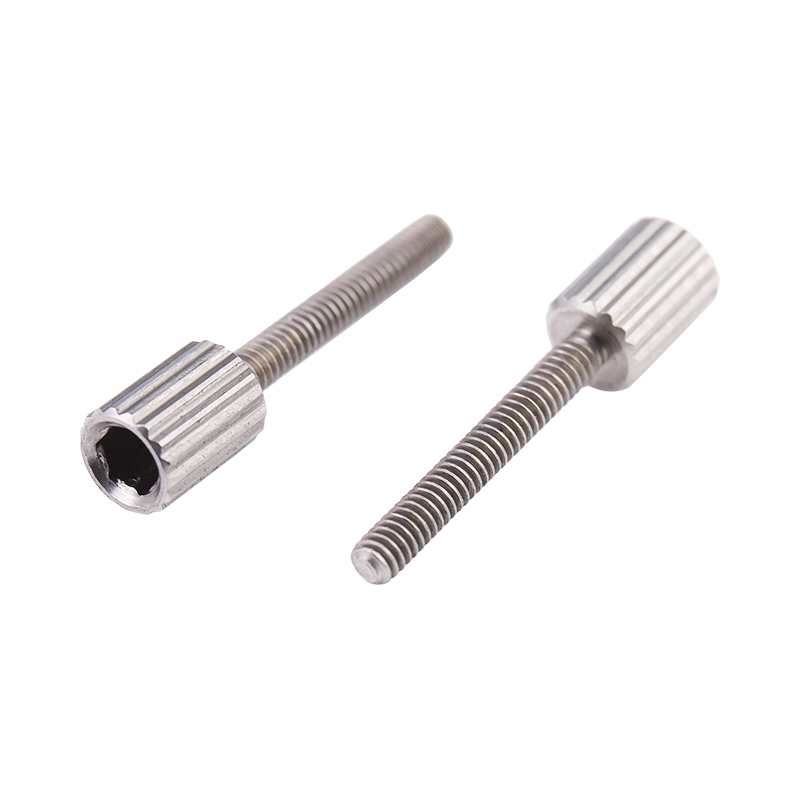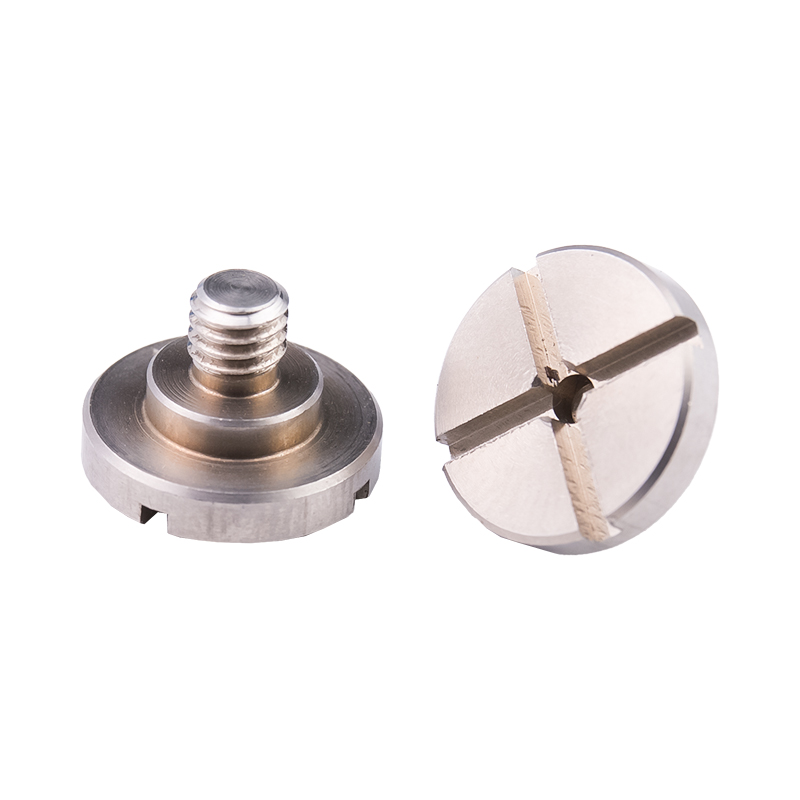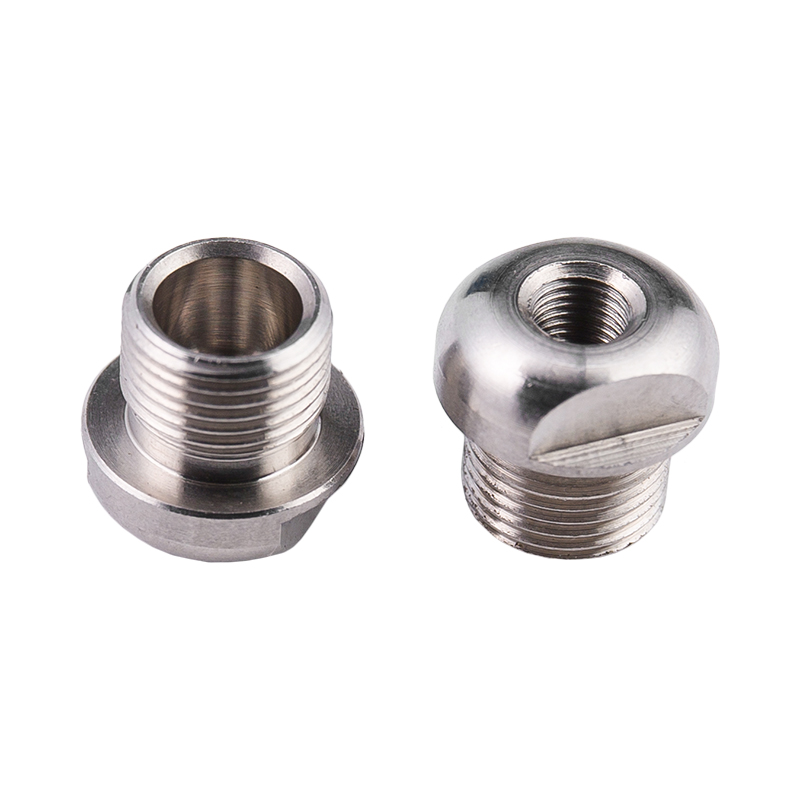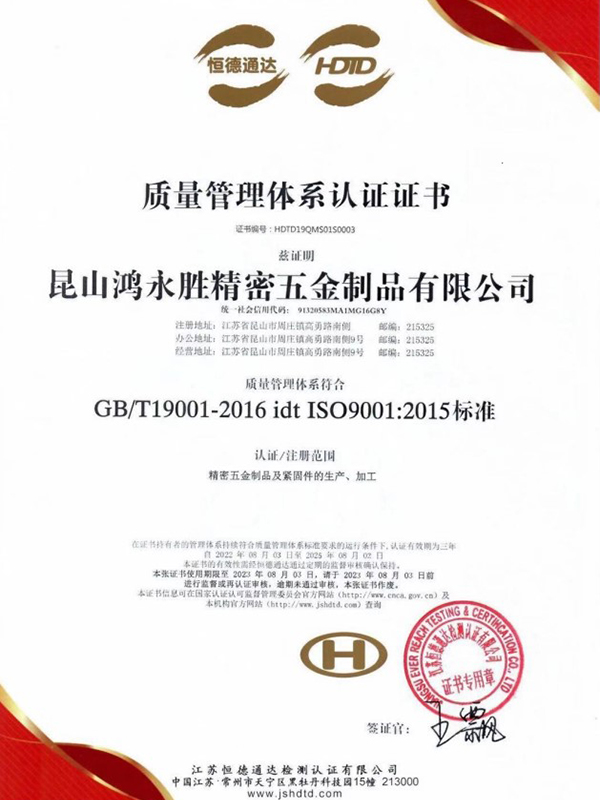Carbon Steel Bolt Supplier Guide: What Buyers Should Look For Selecting the right supplier for carbon steel bolts affects product performance, safety, and long-term cost. This guide breaks down the p...
READ MOREThe company has obtained two quality system management certificates of ISO9001:2015 and IATF16949:2016.
At present, the company has been for Japan, Sweden, the United States, Singapore, Malaysia, Hong Kong and the Pearl River Delta and many other customers to provide services, now the main customers are: Japan Sharp (SHARP), Japan SMC, Japan Panasonic (Panasonic), the Swedish automobile VOVOL, etc., all the fixed assets investment of more than 30 million dollars, welcome friends from all walks of life to the factory to visit, study, consulting and come! We welcome friends from all walks of life to visit our factory, investigate, consult and come to us for sample processing.
We are looking forward to establishing a good business partnership with you with mutual trust and reciprocity!
-
-
Introduction: The Foundation of Mechanical Systems In the intricate world of modern manufacturing and engineering, machined parts form the fundamental building blocks of virtually every mechanical sys...
READ MORE -
Why Structural Integrity Matters In construction, machinery, and other industrial applications, structural integrity is crucial for safety, performance, and longevity. One of the key elements in ensur...
READ MORE -
Introduction to Stainless Steel Fasteners Stainless steel fasteners are widely used in construction, machinery, and industrial applications due to their corrosion resistance and durability. Among them...
READ MORE
How do non-standard stainless steel screws contribute to improved performance, reliability, and safety in various applications?
Non-standard stainless steel screws can be tailored to meet precise specifications, such as unique lengths, diameters, thread types, or head shapes. This customization ensures optimal fit and function within specialized equipment or structures, reducing the risk of component failure or malfunction.
Stainless steel is inherently resistant to corrosion, making it ideal for applications exposed to moisture, chemicals, or saltwater conditions. Non-standard stainless steel screws provide even greater corrosion resistance by utilizing specific grades or alloys tailored to the environment, thereby extending the lifespan of equipment and structures.
Stainless steel fasteners offer high tensile strength and durability, ensuring they can withstand heavy loads, vibrations, and other mechanical stresses without deformation or failure. Non-standard screws can be further optimized for specific load-bearing requirements, contributing to the overall reliability and safety of critical components.
In certain applications, standard screws may not be suitable for use with specialized materials such as composites, plastics, or exotic alloys. Non-standard stainless steel screws can be customized with thread profiles and coatings optimized for compatibility with these materials, ensuring secure fastening without compromising integrity or performance.
Non-standard stainless steel screws excel in harsh environments where standard fasteners may corrode, degrade, or lose effectiveness over time. By customizing the material composition, surface finishes, and protective coatings, these screws can withstand extreme temperatures, exposure to chemicals, abrasive conditions, and other environmental challenges, thereby maintaining performance and safety standards.
In industries such as aerospace, automotive, and medical devices, where precision and reliability are paramount, non-standard stainless steel screws play a crucial role. Customized fasteners undergo stringent quality control measures and adhere to strict tolerances, ensuring consistent performance and minimizing the risk of component failure or system downtime.
Can non-standard stainless steel screws be integrated into existing systems or designs easily?
Ensure that the specifications of the non-standard screws, such as thread type, diameter, length, and head shape, match the requirements of the existing system or design. Compatibility with other components and materials within the assembly is crucial to ensure proper fit and functionality.
Verify that there is adequate space and clearance within the existing system or design to accommodate the non-standard screws without causing interference or obstruction. Consider any dimensional variations between standard and non-standard fasteners to avoid issues during installation.
Evaluate whether any adjustments need to be made to the fastening technique or tooling to accommodate the non-standard screws. This may include using specialized tools or techniques for installation, especially if the screw heads or drive types differ from standard fasteners.
Assess the structural integrity of the assembly to ensure that the introduction of non-standard screws does not compromise overall stability or performance. Consider factors such as load-bearing capacity, stress distribution, and material compatibility to maintain safety and reliability.
Conduct thorough testing and validation procedures to verify the functionality and performance of the assembly after integrating non-standard screws. This may involve simulated stress tests, functional checks, and quality inspections to ensure that the modifications meet design requirements and standards.



 русский
русский Español
Español





